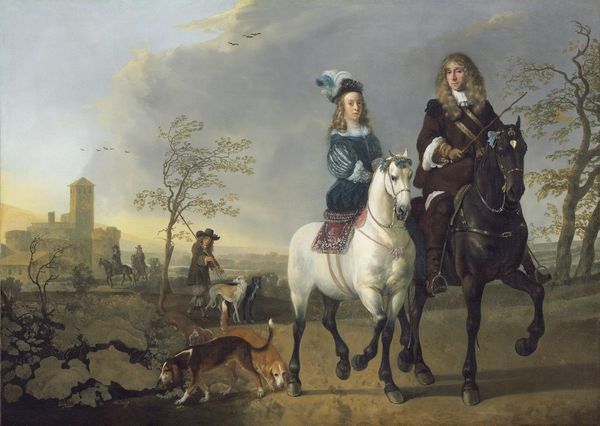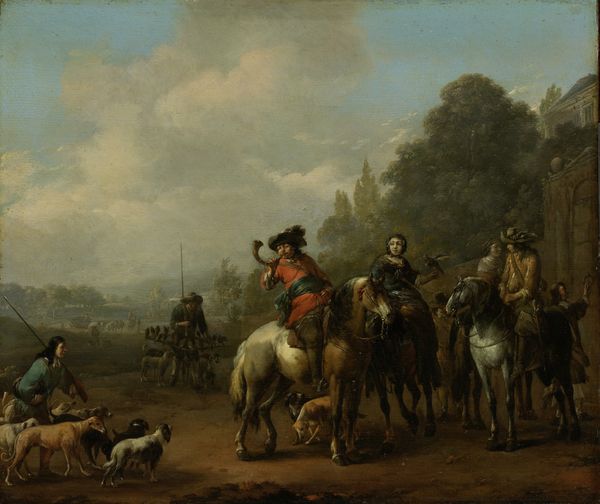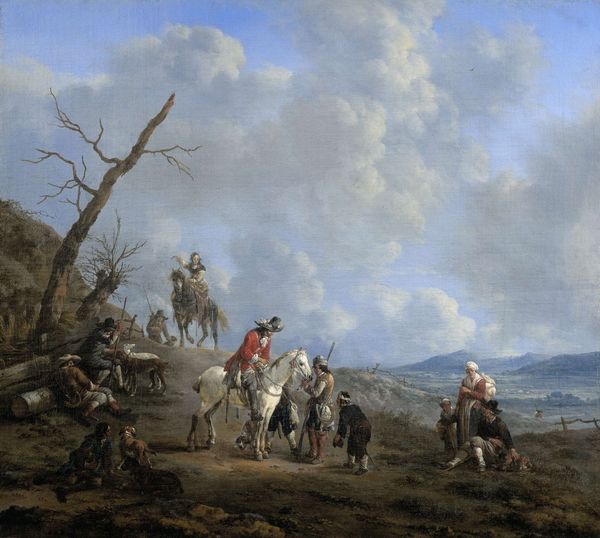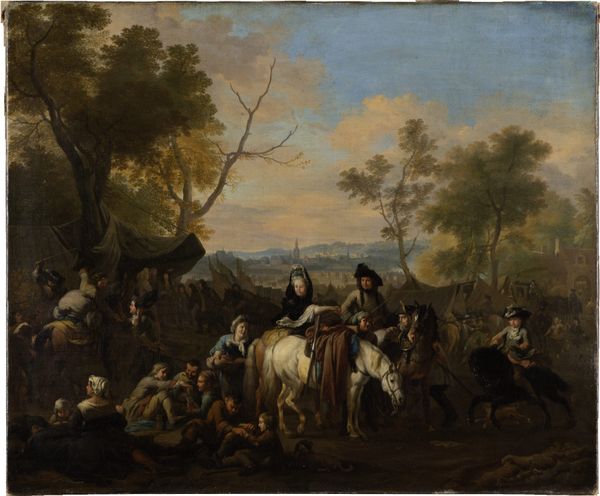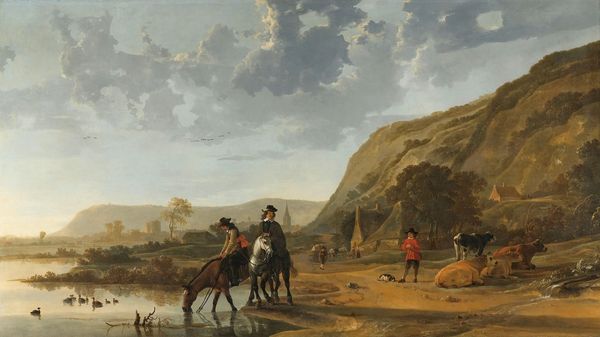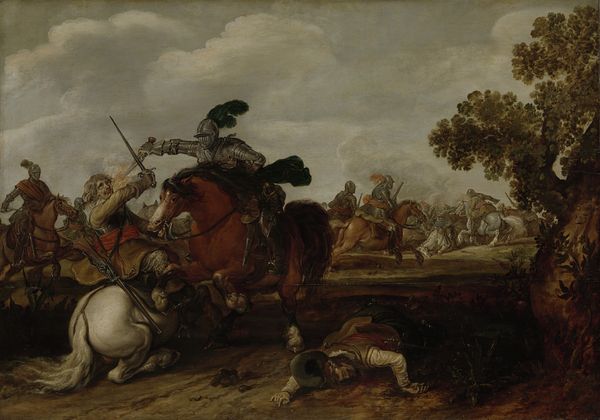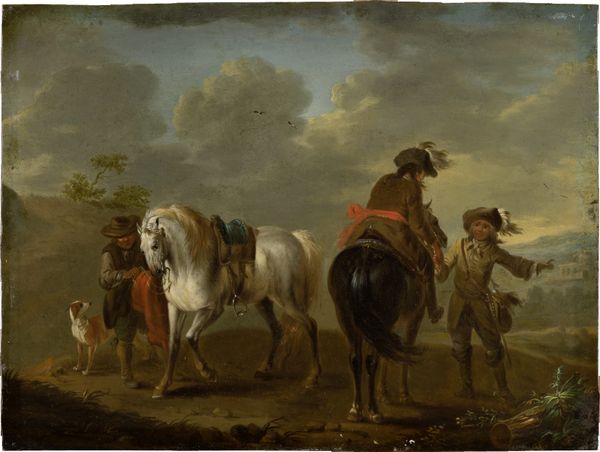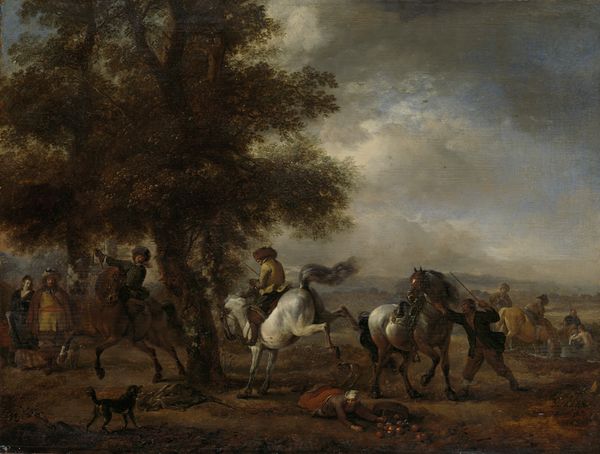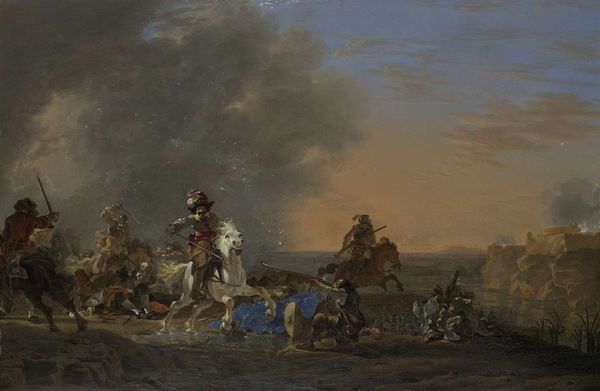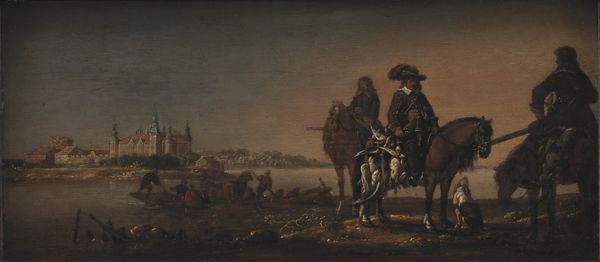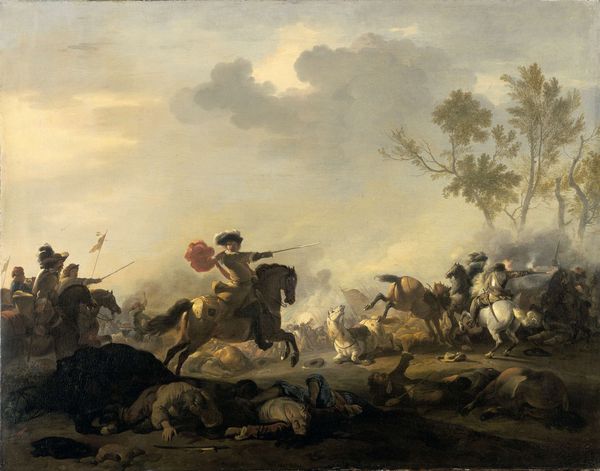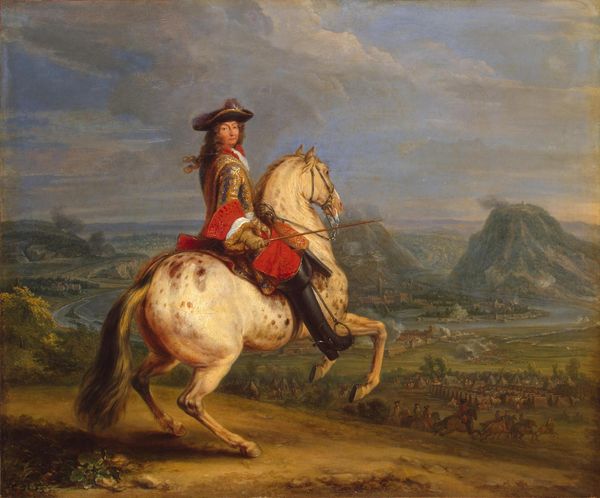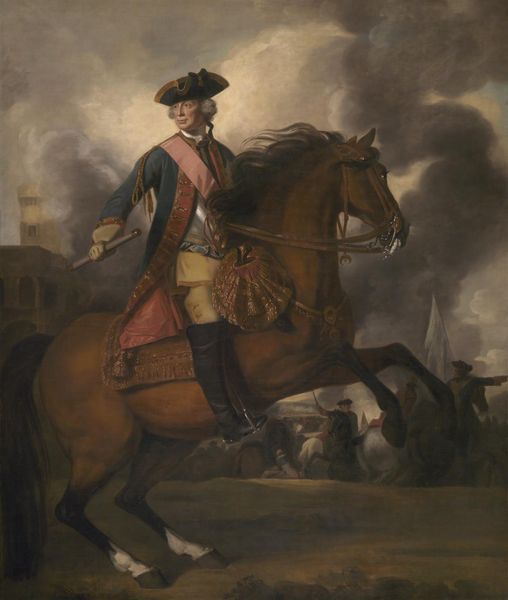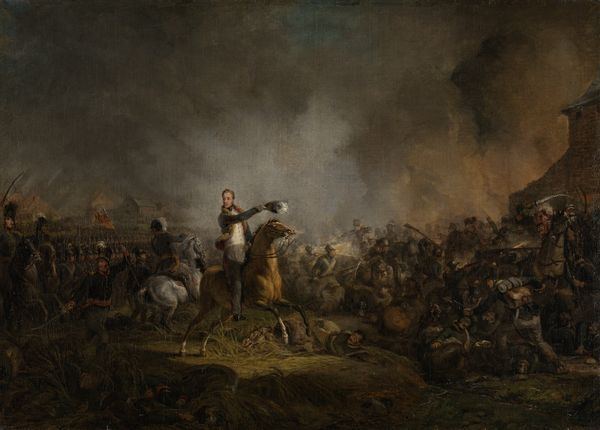
painting, oil-paint
#
portrait
#
baroque
#
painting
#
oil-paint
#
landscape
#
history-painting
Dimensions: height 121 cm, width 165 cm
Copyright: Rijks Museum: Open Domain
Curator: This is "Henry Casimir II, Prince of Nassau-Dietz, in a Battle," painted in 1692 by Jan van Huchtenburg, and currently residing here at the Rijksmuseum. It's an oil-on-canvas, quite typical of Baroque history painting. Editor: My initial feeling is one of orchestrated chaos. The swirling smoke, the frantic energy of the horses, yet… a strangely staged feel overall. Curator: It’s interesting you say that. Huchtenburg was well known for these battle scenes, but often his commissions were deeply intertwined with projecting specific political narratives. The placement of Henry Casimir II on the light grey horse, elevated and centrally located, presents him as the undeniable leader amidst the turmoil. Editor: Yes, there's a distinct contrast between the luminous figure of the Prince and the darkly rendered combat around him. I find it almost unsettling how cleanly he's portrayed given the mayhem unfolding behind him. The sharp diagonals of the fallen soldiers versus the vertical composure of the prince... it directs the eye. Curator: Exactly. Consider also that these heroic portraits during this period served a very public function: consolidating power, shaping public perception. And van Huchtenburg, being well-connected, was clearly mindful of those expectations. His access allowed him insight and patronage from very important figures. Editor: Do you think he used a formal posing or “sittings”? Curator: That would not be at all unusual; especially for such an important portrait. Also, do you notice the landscape beyond? He often added staffage like that, and then even copied elements of one painting into another, giving the impression that there was a real and cohesive place, as if from a real battle. Editor: Now I notice the horizon has been divided almost in thirds... giving such gravity and balance. But even so, despite the heroic overtones, I'm struck by a certain detachment. Is it the artist distancing us? Is the subject? Or is it perhaps because war art, from this era onward, began to focus less on the individual bravery and more on large-scale conflict? Curator: A possibility, or that those conflicts are carefully edited. Certainly, Huchtenburg was contributing to a narrative, an ideal of leadership and power during a tumultuous period in Dutch history. Editor: Thank you. Thinking about van Huchtenburg’s approach really does help me view these classic scenes through a completely different lens.
Comments
rijksmuseum about 2 years ago
⋮
Henry Casimir II fought under his cousin, William III of Orange, as an officer in the army of the Dutch Republic. They were not always on good terms with one another. In 1674 Henry Casimir even defected to the French enemy, only to return in 1688. In the year that this portrait was painted, he hoped – in vain – to be promoted to the rank of ‘first field marshall’.
Join the conversation
Join millions of artists and users on Artera today and experience the ultimate creative platform.
